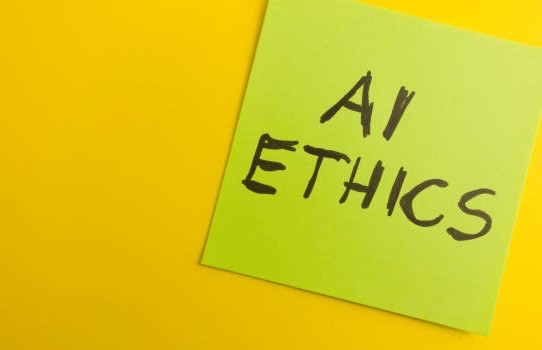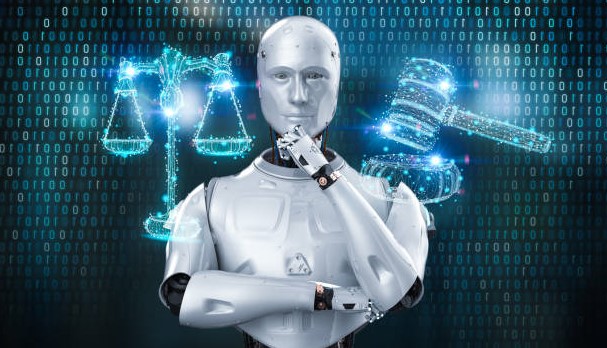Introduction
Artificial intelligence (AI) is transforming the world in unprecedented ways, creating new opportunities and challenges for humanity. As AI becomes more pervasive and powerful, it is essential to ensure that it is aligned with human values and goals and that it respects and protects the rights and dignity of all stakeholders. This requires not only technical skills and knowledge but also ethical and social awareness and responsibility. Therefore, teaching and learning AI should not only focus on the how, but also on the why and the what of AI: why do we develop and deploy AI systems, and what are the intended and unintended consequences of doing so?
In this article, we will explore how to incorporate ethical and social aspects of AI into teaching and learning activities, for different audiences and levels. We will discuss why it is important to teach and learn AI ethically and socially, what are the key concepts and principles of AI ethics and society, how to design and deliver effective AI education with ethical and social dimensions, and what are the best practices and resources for doing so. We will also share some examples and case studies of AI education initiatives that aim to foster ethical and social awareness and responsibility among AI learners and educators. Our goal is to inspire and empower you to teach and learn AI in a way that is not only technically sound but also ethically sound and socially relevant.
What are AI Ethics and Society?
Before we dive into the details of how to teach and learn AI ethically and socially, let us first clarify what we mean by AI ethics and society. AI ethics is the study of the moral and ethical issues that arise from the development and deployment of AI systems, such as fairness, accountability, transparency, privacy, security, human dignity, etc. AI society is the study of the social and cultural impacts and implications of AI systems, such as human-AI interaction, social justice, human rights, democracy, etc. Both AI ethics and society are interdisciplinary fields that draw from various disciplines such as philosophy, law, sociology, psychology, etc. They are also dynamic and evolving fields that respond to the changing needs and challenges of the AI landscape. Therefore, teaching and learning AI ethically and socially requires not only a solid understanding of the technical aspects of AI but also a critical and reflective approach that considers the broader context and consequences of AI.
Why Teach and Learn AI Ethically and Socially?
So, why is it important to teach and learn AI ethically and socially? There are several reasons for this. First, teaching and learning AI ethically and socially can help us to develop and deploy AI systems that are not only technically feasible but also morally acceptable and socially beneficial. By considering the ethical and social aspects of AI, we can ensure that AI systems are aligned with human values and goals and that they respect and protect the rights and dignity of all stakeholders. Second, teaching and learning AI ethically and socially can help us to prepare for the future of AI, which is likely to bring significant changes and challenges to various aspects of human life and society. By understanding the ethical and social impacts and implications of AI, we can anticipate and mitigate the potential risks and harms of AI, and also leverage the potential opportunities and benefits of AI. Third, teaching and learning AI ethically and socially can help us to foster a culture of responsible and ethical AI among developers and users. By raising ethical and social awareness and responsibility among AI learners and educators, we can encourage them to act as agents of positive change in the AI landscape and to engage in meaningful dialogue and collaboration with other stakeholders.
How to Teach and Learn AI Ethically and Socially?
Now that we have established the importance of teaching and learning AI ethically and socially, let us explore how to do so. There is no one-size-fits-all approach to teaching and learning AI ethically and socially, as different audiences and levels may have different needs and expectations. However, there are some general principles and guidelines that can help us to design and deliver effective AI education with ethical and social dimensions. In the following sections, we will discuss some of these principles and guidelines, such as defining the learning objectives and outcomes, choosing the appropriate content and methods, assessing and evaluating the learning process and impact, etc. We will also provide some examples and case studies of AI education initiatives that incorporate ethical and social aspects of AI into their teaching and learning activities, for different audiences and levels. We hope that these examples and case studies will inspire and inform you to create your own AI education experiences that are ethically sound and socially relevant.
Defining the Learning Objectives and Outcomes
The first step in designing and delivering AI education with ethical and social dimensions is to define the learning objectives and outcomes. What do you want your AI learners and educators to know, understand, do, and feel after completing your AI education activity? How will you measure and evaluate their learning progress and achievement? These are some of the questions that you need to answer before you start planning your AI education content and methods.
There are different ways to define the learning objectives and outcomes, depending on your AI education context and purpose. One possible way is to use Bloom’s taxonomy of learning domains, which classifies the learning objectives and outcomes into three categories: cognitive (knowledge and understanding), affective (attitudes and values), and psychomotor (skills and abilities). For example, a cognitive learning objective could be to explain the concept of fairness in AI; an affective learning objective could be to appreciate the importance of ethical AI; and a psychomotor learning objective could be to apply a fairness metric to an AI system.
Another possible way to define the learning objectives and outcomes is to use UNESCO’s key competencies for the 21st century, which are relevant for teaching and learning AI ethically and socially. These competencies are literacy (reading, writing, numeracy, digital literacy), multilingualism (communication in different languages and contexts), STEM (science, technology, engineering, mathematics), citizenship (civic engagement, human rights, intercultural dialogue), entrepreneurship (creativity, innovation, problem-solving), sustainable development (environmental awareness, social responsibility), personal development (self-awareness, emotional intelligence, resilience). For example, a literacy competency could be to read and write about AI ethics and society; a multilingualism competency could be to communicate with different stakeholders about AI issues; a STEM competency could be to understand and use AI tools and methods; a citizenship competency could be to participate in AI decision-making and policy-making; an entrepreneurship competency could be to create and innovate AI solutions for social good; a sustainable development competency could be to consider the environmental and social impacts of AI; and a personal development competency could be to reflect on one’s values and goals concerning AI.
Whichever way you choose to define the learning objectives and outcomes, you should make sure that they are SMART: specific, measurable, achievable, relevant, and time-bound. You should also make sure that they cover both the technical and the ethical and social aspects of AI, and that they are aligned with your AI education purpose and audience.
Choosing the Appropriate Content and Methods
The next step in designing and delivering AI education with ethical and social dimensions is to choose the appropriate content and methods. What are the key concepts and principles that you want your AI learners and educators to learn about AI ethics and society? How will you present and explain them engagingly and effectively? How will you facilitate and support the learning process and interaction? These are some of the questions that you need to answer before you start implementing your AI education activity.
There are different types of content and methods that you can use for teaching and learning AI ethically and socially, depending on your AI education context and purpose. One possible type is to use case studies, which are real or fictional scenarios that illustrate the ethical and social issues and dilemmas that arise from the development and deployment of AI systems. Case studies can help to contextualize and concretize the abstract and complex concepts and principles of AI ethics and society, and to stimulate critical thinking and discussion among AI learners and educators. For example, a case study could be about the use of facial recognition technology for law enforcement or social media; or about the development of autonomous weapons or self-driving cars.
Another possible type is to use games, which are interactive activities that involve rules, goals, challenges, feedback, and rewards. Games can help to motivate and engage AI learners and educators, and to provide them with experiential and immersive learning opportunities. Games can also help to develop and enhance various skills and competencies that are relevant to AI ethics and society, such as problem-solving, collaboration, communication, creativity, etc. For example, a game could be about designing and testing an AI system that meets certain ethical and social criteria; or about exploring the consequences of different AI scenarios and choices.
Thoughts
AI education and learning should be ethical and social, respecting human values and interests. We have explored some of the key issues and solutions for this goal, such as ethical frameworks, critical thinking, interdisciplinary collaboration, stakeholder engagement, and digital inclusion. We hope to inspire more ethical and social AI education and learning for the common good.




